STORIES FROM THE PHILADELPHIA ORCHESTRA ASSOCIATION RECORDS
After a year and a half of hard work, and with a healthy dose of support and some heavy lifting (literally) contributed by my wonderful colleagues at the Special Collections Processing Center at Penn Libraries, I’m very pleased to announce that the first portion of the archives of The Philadelphia Orchestra Association are processed.
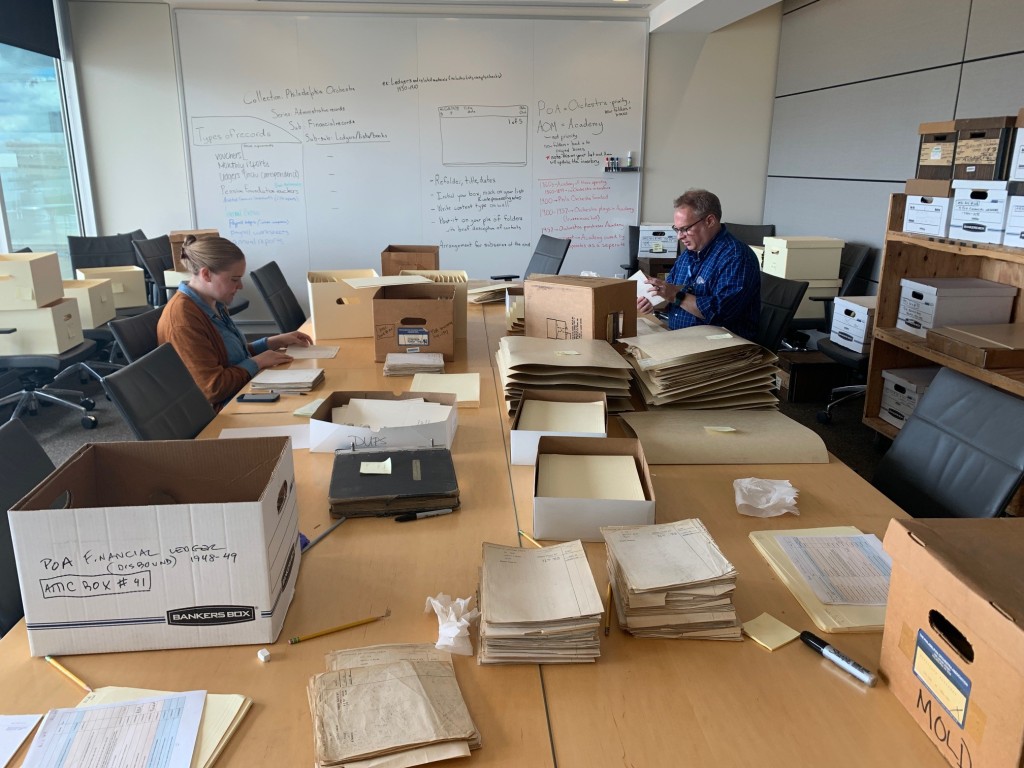
Cataloged (or as archivists like to say, “arranged and described”), housed in acid-free folders and organized in record boxes, these files are now open for research, their stories ready to be uncovered and shared.
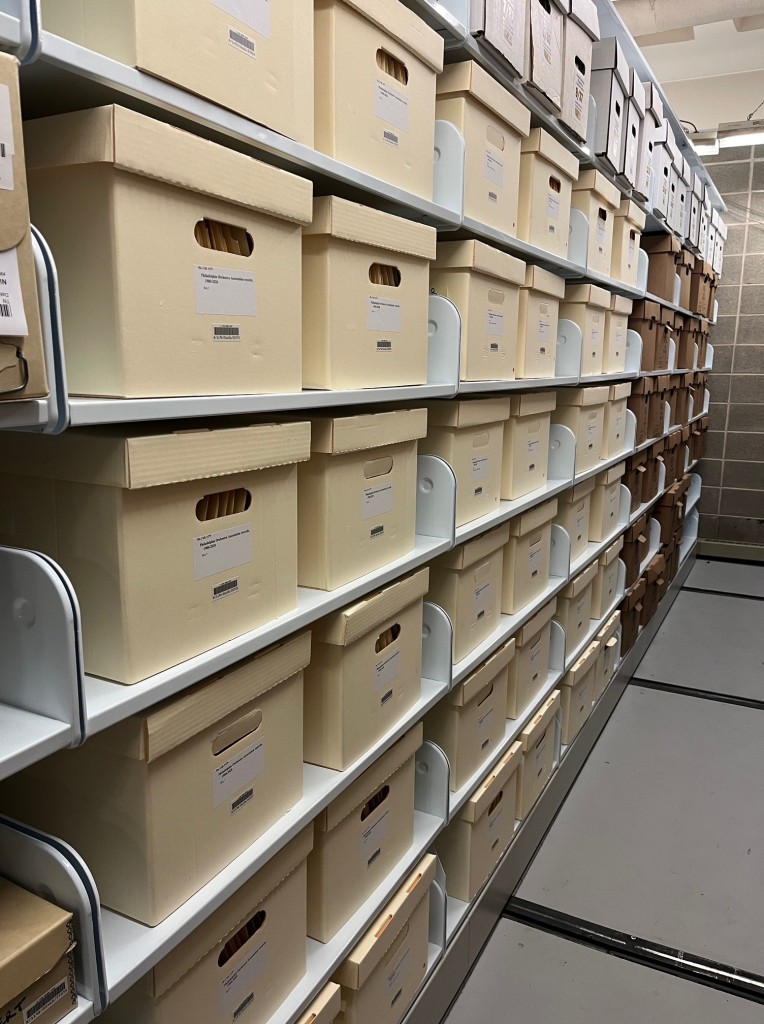
The collection’s catalog, called a finding aid, can be found on the Philadelphia Area Archives Portal.
Information about visiting and requesting these materials can be found on the Kislak Reader Services site.
What’s listed and available
Currently the finding aid lists 16 series (a.k.a subject areas, or sections) of the collection. Of these 16, four are currently available:
1. Early correspondence and personnel files
2d. C. Wanton Balis, Jr. papers
12. Tours, out-of-town performances and venues
13. Radio and television broadcasts, recordings and films (administrative files)
Each of the available series titles is followed by a description of its contents and a drop-down list of every folder within that series. Any listed folder may be requested for viewing, with the exception of those that are restricted, as indicated in folder titles.
What’s in the finding aid but not yet available
I made the decision to provide the names of the other 12 series in order to show what other types of documents are in this portion of the collection even though they are not yet processed. Think of this as “coming attractions.” I’ve been working on these files since September and hope to have them fully processed by the end of the spring or summer.
But wait, there’s more!
Even beyond the 16 administrative series listed in the finding aid, even more materials will be processed and made available for research over the coming months and years. These include, but are not limited to: a complete run of programs, photographs, albums, scrapbooks, artist files, recordings, prints and drawings, and the archives of the Academy of Music.
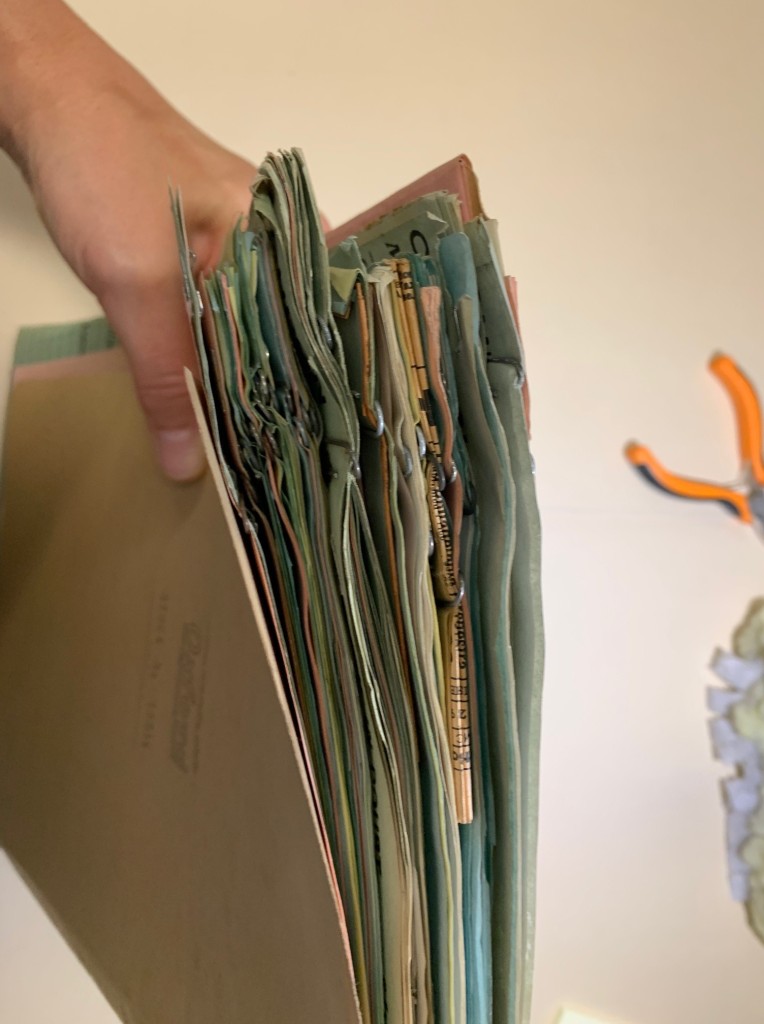
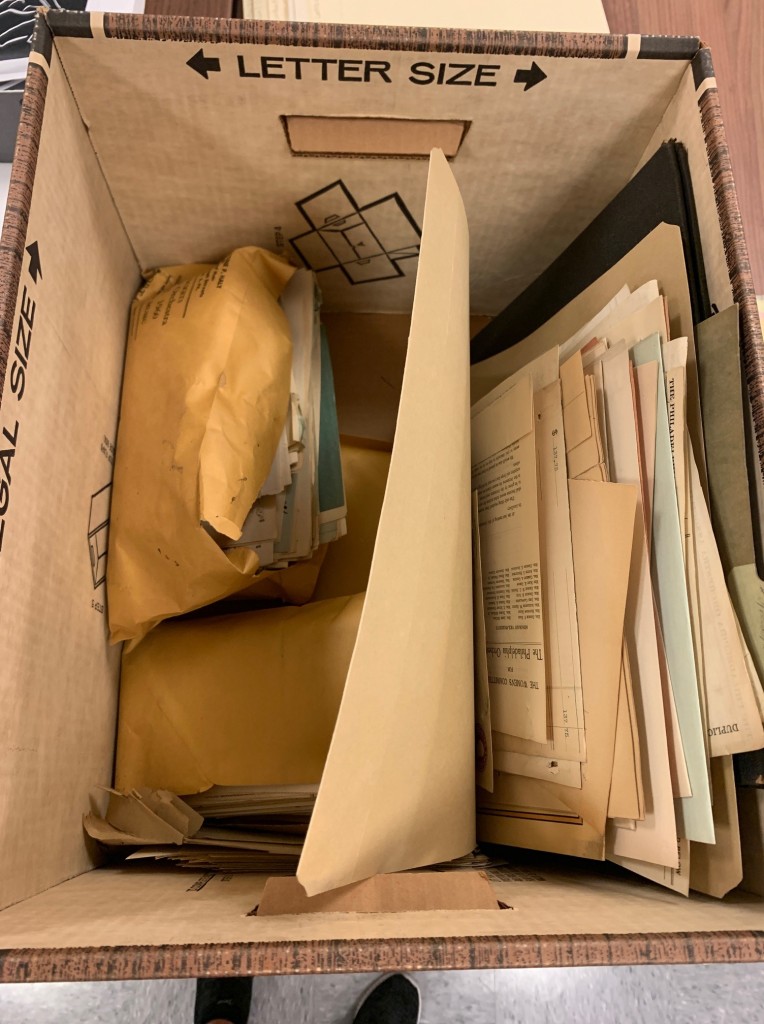
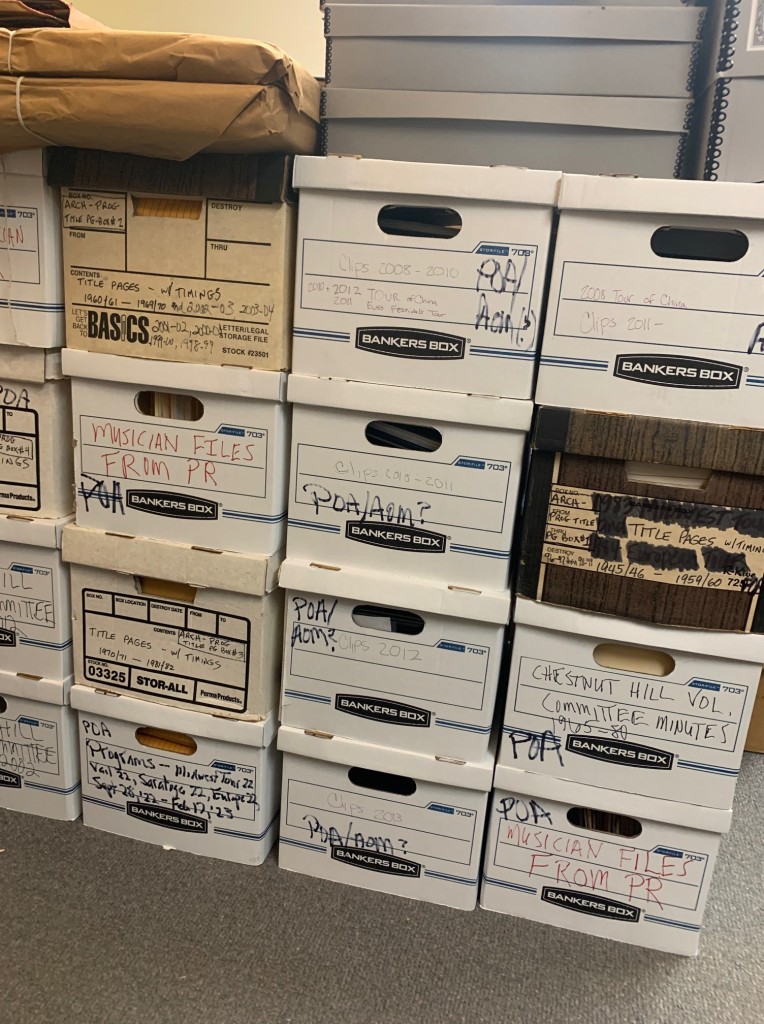
Early personnel and personalities
In the weeks and months ahead, I will be sharing interesting materials and topics from the collection in forthcoming blog posts. Today I’ll highlight the fact that these available materials include a tremendous amount of correspondence, which documents the early formation of the Orchestra’s musical and organizational identity. This includes:
The correspondence and personnel records of Karl (Carl) Pohlig, the Orchestra’s second conductor from 1907-1912.
Leopold Stokowski’s correspondence as preserved by the Orchestra, from 1912-1941. Stokowski was the Orchestra’s third conductor, who propelled the ensemble into prominence, and created what would come to be known as its lush, warm “Philadelphia Sound.” His correspondence ranges from numerous letters and memos demonstrating his exacting standards with musicians and acoustical performance/recording spaces, to his stated distaste for any photos of himself that were NOT in profile view; from his correspondence with contemporary leading conductors and composers, to the specifications for his renovated washroom at the Academy of Music.
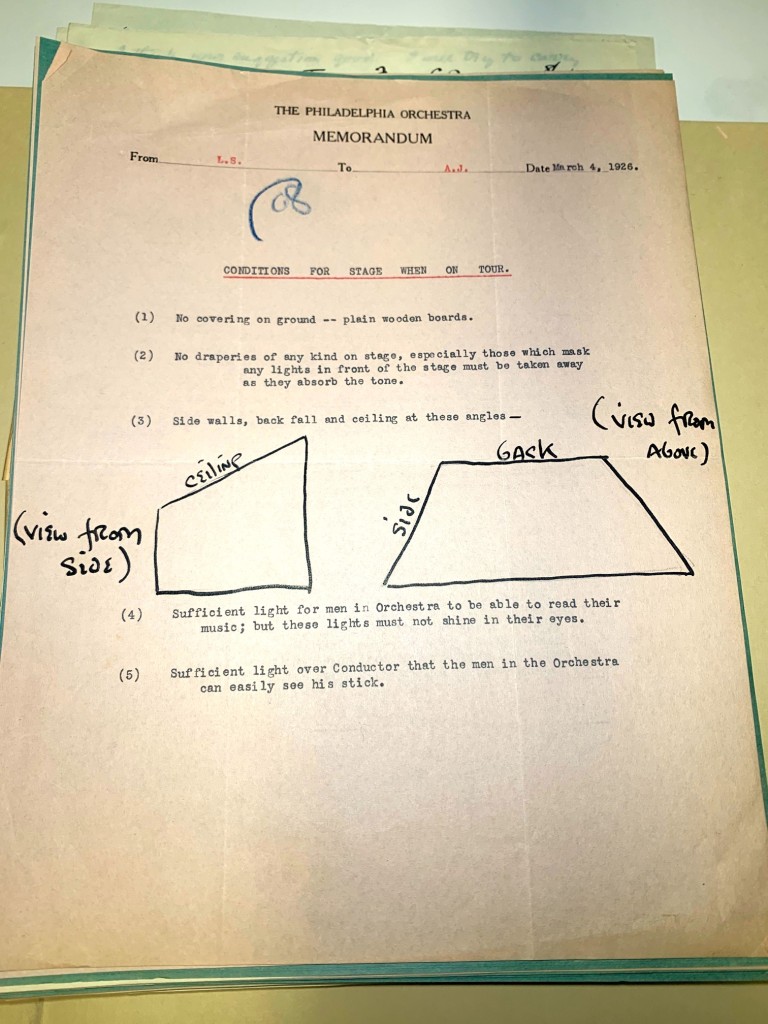
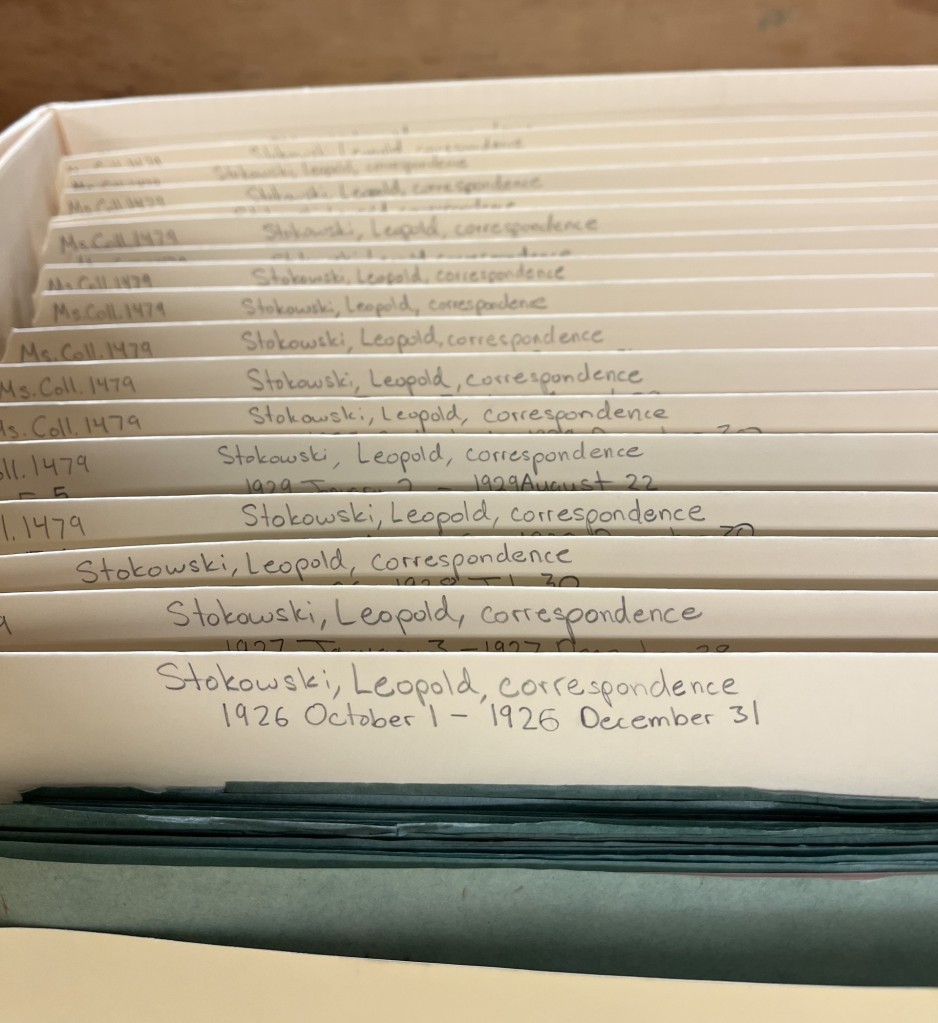
The correspondence of Eugene Ormandy as preserved by the Orchestra, from 1931-1935. During this period he was not yet conductor of the Orchestra (he was in fact serving as conductor of the Minneapolis Symphony Orchestra), but was developing a strong relationship with it (and Stokowski), and making guest conducting appearances. This correspondence documents the years leading up to him becoming The Philadelphia Orchestra’s fourth and perhaps most beloved conductor, going on to stay with the ensemble for a remarkable 44 years until his death.
The correspondence of numerous guest conductors and artists from the 1910s-1940s, including Ossip Gabrilowitsch, José Iturbi, Fritz Reiner, and Arturo Toscanini. These files also include schedules, repertoire lists and contracts.
The correspondence of the Orchestra’s early benefactors and fundraisers, including files of Frances A. Wister (1905-1919), who headed the Women’s Committee, and the files of both Edward and Curtis Bok (1912-1934).
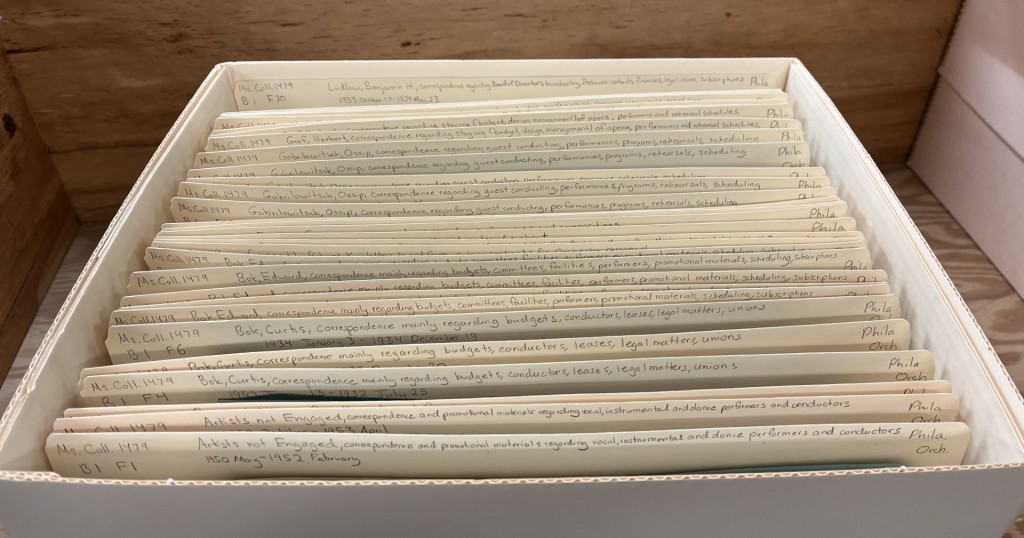
Stay tuned (pun intended!) for more updates as I continue to process these materials and delve into the history of The Philadelphia Orchestra.
The Philadelphia Orchestra Association records, which represent the Orchestra’s institutional history from 1900-2023, are partially available for research. The remainder of the collection is still in process. If you wish to consult material from the published portioned of the finding aid, please request material via the finding aid site. If you have questions, please reach out to kislak@upenn.edu.


6 responses to “Introducing the Philadelphia Orchestra Association records”
great to see the progress. Joe G.
This is fantastic. My father was in the Orchestra from 1946 until 1966 and was head of the labor union that negotiated the 52 week contract. I remember it well. He was so engrossed with the process that he left the orchestra and got his Phd in Political Science, became a professor at Drexel and founded the first graduate degree for Fine Arts administration. He was also the president of the State Arts council during the administration of Milton Shapp. I would love to see the records of this pivotal time. Are there also recordings and tapes of the TV concerts they did? Oh, his name was Edward Arian. Assistant First Bass during Ormandy.
on behalf of Anna Juliar: Hi Anne, I’m so glad to read that this collection carries such a strong personal connection to you. The processing of the majority of the administrative materials, including the labor union files, is nearing completion, and I hope these will be made accessible by the end of May. At that point you may request any accessible materials from our finding aid site (the link is provided in the above post) and come look at them in our reading room at Van Pelt-Dietrich Library. To answer your other question, yes, the collection includes a very large number of recordings, including recordings for television (although the majority are recordings for radio broadcast). Over the summer I will be publishing a list of a majority of the recordings currently in the collection, although until they are migrated from their current formats into digital formats the actual recordings will not be available. It is my understanding that plans to begin this process are underway, but this will take some time. Thanks again for sharing your connection to the collection! – Anna Juliar (Processing Archivist for the Philadelphia Association and Academy of Music Archives)
Wonderful news. Congratulations!
Are there plans to develop a searchable performance database comparable to the online products offered by the Boston Symphony Orchestra, New York Philharmonic and Metropolitan Opera? Or have I missed something?
Thank you!
On behalf of Anna Julia:
Hi William, currently there are no plans to develop such a database. The focus of this project is to process the entire collection to provide access to the archival documents. As mentioned in the post, the finding aid is an electronic catalog that will list the collection’s holdings, which users can access online and search through to locate items they may consult in person.